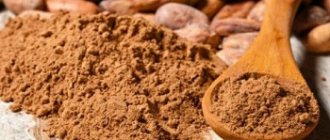How milk changes the properties of coffee
Milk has little effect on the chemical composition of the drink, its absorption and effect on the body. The only known chemical reaction between these two products is that tannins (tannins) in coffee bind milk proteins, so both are poorly absorbed.
Dairy supplements partially reduce the aggressive effect of the coffee component on the mucous membrane of the stomach and intestines. This happens due to the alkaline reaction of fresh milk - it to some extent reduces the acidity of gastric juice, which helps prevent heartburn and damage to the mucous membranes.
For this reason, a drink with added dairy products is not so harmful for people with gastrointestinal diseases - gastritis, a tendency to heartburn. However, milk does not cancel the property of coffee to increase the secretion of hydrochloric acid and digestive enzymes, so there is no question of the complete safety of this option. It's just a little less harsh on the digestive system. For a person with a stomach ulcer, gastritis in the acute stage, pancreatitis or cholecystitis, a drink even with milk additives is contraindicated.
It is generally accepted that milk partially reduces the effects of caffeine:
- stimulation of the nervous system;
- activation of cardiac activity;
- formation of dependence;
- leaching of useful substances.
Coffee with milk will not significantly invigorate you in the morning, but it will not provoke overexcitement and nervousness (however, everything is individual, including sensitivity to the components of the drink).
“Whiteened” with dairy products, it is less dangerous for hypertensive patients, but you still shouldn’t get carried away. Blood pressure will still rise, albeit to a lesser extent.
If black coffee has a diuretic effect, promoting dehydration of the body and leaching of calcium, then the milk component partially compensates for these losses - because it contains important microelements, including calcium.
History of the drink
The combination of these two products goes by many different names:
- cappuccino;
- latte;
- frapé;
- konpanna;
- latte macchiato.
There are many recipes based on a coffee drink with the addition of dairy products. The main ingredient in the drink is, of course, ground coffee. One version says that the history of this drink began in Ethiopia. The shepherd noticed that his goats were eating some berries, after which the animals ran around the field without stopping and did not even sleep at night. The shepherd decided to try the berries himself and felt an incredible surge of energy. He shared his discovery with his neighbors, and they also began to eat the berries to stay active during the day. Much later they learned to make a drink from grains.
Currently, coffee trees are grown in South and Central America, Asia, and Africa. The coffee industry is best developed in Brazil, which is the world's largest supplier of coffee. Most people prefer Arabica for its smooth and amazing taste.
On a note! In global trade turnover, coffee is in second place after oil.
It is not known for certain who was the first to decide to add milk. There are many versions of where the name “cappuccino” came from. Perhaps the name originates from the monastic order of the Capuchins, who wore hoods whose color resembled a coffee-milk drink. Translated from the Italian word “capuccio” means “hood”.
According to another version, France is considered the birthplace of the drink. In this country, black coffee began to be diluted with milk, after which the drink became popular in Europe and America. In Russia, they did not drink natural coffee for a long time, preferring instant sublimate. Now in our country there are many fans of real taste and enchanting aroma.
Beneficial properties of coffee with milk
Based on the results of numerous studies, it became clear that the benefits of a coffee drink with added milk are much higher than regular coffee. This is because the elements contained in these two ingredients do not react chemically with each other. Therefore, the more milk in a drink, the less caffeine it contains. Milk, in turn, helps replenish calcium, which is washed out of the body. In addition, this drink has a low calorie content and has a diuretic effect, so nutritionists recommend drinking it in small quantities.
This drink has a number of advantages:
- Contains many vitamins, minerals, antioxidants, which have a positive effect on the epidermis, slow down the aging process of the body, help strengthen cells, and prevent hair loss.
- Natural ground coffee has an effect on the nervous system, stimulating its activity. Consuming it in small quantities helps increase brain activity, reduces feelings of fatigue and drowsiness, and provides increased physical and mental activity.
- The composition of the drink ensures healthy, restful sleep, so one cup of it in the evening will not cause insomnia.
- Adding milk to coffee prevents the development of malignant tumors and also washes calcium out of the body.
- The antioxidants contained in the drink help prevent the development of many diseases, including hypotension.
Can everyone enjoy this drink, benefits for human health
Not every adult body can tolerate caffeine normally.
Coffee contains polyphenol antioxidants. It is they who determine the beneficial effect of the drink on the human body. How does milk affect the content of polyphenols?
Swiss scientists at the Nestle Research Center conducted studies to determine whether polyphenols are absorbed when milk is added to coffee. Different types of coffee were tested on a group of adults. It was found that milk in the drink does not have any effect on the polyphenol content in the body. We can conclude that adding milk does not reduce the benefits in any way.
Harm of coffee with milk
Some experts claim that the drink beloved by many causes significant harm to the body:
- may cause stomach cancer over time;
- enhances the effects of all harmful substances in the human body;
- causes psychological dependence.
Observations were carried out on two groups of coffee drinkers. Some people drank a black, strongly brewed drink, while others drank milk with the addition of milk. So, studies have shown that health problems arose precisely in the second group, that is, among those who drank coffee with milk.
Scientists insist that tannin, which is found in significant quantities in coffee, binds milk protein and prevents it from being absorbed in the body.
But it should be noted that the harm of coffee with milk depends on many factors: the quality, naturalness of the raw materials used for its preparation, the amount of the drink consumed per day. Of course, if you treat yourself to a cup of your favorite cocktail in the morning, it will not have a negative effect on your body. But if you use it several times a day, it will definitely not be beneficial.
Is coffee harmful?
But it should be noted that not everyone can drink coffee with milk. There is a large category of people for whom this drink is strictly contraindicated. Patients with cardiac ischemia, atherosclerosis, and hypertensive patients are not recommended to drink coffee with milk. People who suffer from kidney disease, glaucoma, regular insomnia and increased excitability should also abstain from it. It is also not advisable to give coffee with milk to children and the elderly.
It is interesting to know that a cup of aromatic cocktail will bring maximum benefit if you drink it in the first half of the day. But after a hearty lunch or on an empty stomach, coffee with milk promises nothing but harm.
Instant coffee with milk is less healthy than natural coffee, which is often drunk by people on a diet. It is known that ground coffee with milk promotes weight loss, as it intensively burns fat. But you must drink this drink without sugar.
So, is it good or bad? Coffee with milk, due to the presence of calcium, prevents the development of osteoporosis, which is important for women over 45 years of age. In addition, it is clear that milk, due to its presence in the drink, reduces the proportion of caffeine in the volume.
The effect of coffee with milk during pregnancy and breastfeeding
Women expecting a baby are sometimes unable to cope with their addiction to coffee and drink it with milk. Coffee with milk for pregnant women is indeed healthier than black coffee, but under one condition: if you drink coffee and milkshakes no more than 1-2 times a month.
The effect of coffee on the body during pregnancy:
- coffee changes hormonal levels. As a result, a woman, whose nervous system is already unstable, experiences anxiety and mood swings;
- coffee impairs the absorption of iron, which leads to anemia and is extremely harmful for the child;
- coffee constricts blood vessels, which impairs the supply of nutrients to the fetus;
- Coffee with milk, just like black coffee, contributes to the leaching of calcium from bone tissue and damage to teeth. Milk does not compensate for calcium deficiency. Coffee is especially dangerous for pregnant women over the age of 30;
- Sometimes coffee provokes nausea and increases toxicosis.
Coffee with milk during breastfeeding (lactation)
The network is full of assurances that you don’t need to give up coffee with milk when breastfeeding. Moreover, the same would-be advisers claim that children under 7 years old should not have coffee under any circumstances. They also do not recommend that nursing mothers eat chocolate, strawberries, cucumbers and oranges, which are a hundred times poorer in allergens than coffee.
The body of a child under 4 months of age does not break down caffeine, but accumulates it. Together with mother's milk, 1–1.5% of caffeine enters the baby's stomach. That is, after every cup of coffee the mother drinks, even with milk, the child receives 0.5–1 mg of caffeine. And this substance stays in the baby’s body for a long time. Is it any wonder that the child does not sleep and is capricious?
Caffeine affects not only the nervous system, but also the composition of the blood: it interferes with the absorption of iron. Let us add that coffee constricts blood vessels, which impairs lactation.
When breastfeeding, drinking coffee is strictly prohibited during the first 4 months of the child's life. If the child is older than 6 months, then the mother can afford 1-2 cups of coffee per month (at least 3 hours before feeding), but you need to be prepared for the baby to be capricious.
List of coffee and milk based drinks
The most popular recipes for coffee with milk are three basic options.
- Cappuccino
- Latte
- Macchiato
Do you think that coffee with milk, whatever you call it, always tastes the same? This is not true; there are quite significant differences between the recipes. Next we will talk about them in detail.
Cappuccino
The basis of cappuccino is espresso and milk. To prepare a cappuccino, it is heated and whipped into foam. The trick is to ensure that the milk contains both foam and liquid. Frothed milk is poured into a cup of hot espresso, forming a thick foam. In the process of adding milk, it is partially mixed with coffee, so the foam on the finished cappuccino has brownish stains around the edges.
Standard cappuccino proportions:
- 1/3 espresso
- 1/3 milk
- 1/3 whipped foam of dense, smooth consistency
Cappuccino is recognized as the most popular recipe in European and American coffee shops. Its volume can vary from 150 to 200 ml, depending on the establishment, but a mandatory serving rule is that the foam should rise slightly above the edge of the cup. The dense consistency allows the foam to retain its shape and not spill out over the top.
Cappuccino is sometimes sprinkled with additives on top - cinnamon, chocolate, cocoa. It is drunk without stirring the foam, passing the coffee with milk through the silky foam structure with each sip. Connoisseurs of the drink do not add sugar to it in order to more fully experience the nutty and milky bouquet.
Latte
To prepare it, use a shot of espresso and a lot of milk. Foam is also present in latte, but in smaller quantities than in cappuccino. It has a different consistency - loose, moist, with a lot of large bubbles.
Standard latte proportions:
- 1/5 espresso
- 3/5 hot milk
- 1/5 milk froth
It is more correct to call a latte a cocktail. The coffee component in it is minimal. In addition, lattes often add large amounts of sugar and toppings, which makes them overly sweet, according to coffee connoisseurs.
Latte has a solid volume, which has shown an upward trend in recent years. Today you won’t surprise anyone with a glass of 400 ml drink.
This version of coffee with milk provides great opportunities for creativity. Its taste qualities are constantly diversified by adding various syrups and fruit water, and painting on its surface has become a separate direction and is called “latte art.” World championships are held on it.
The coffee recipe with a lot of milk has another option - latte macchiato. If a regular latte is stirred to form a homogeneous liquid with a top layer of foam, then a macchiato is poured in layers. Coffee, milk and foam are clearly separated in the glass. Unlike a regular latte macchiato, latte macchiato is not stirred, but sugar and toppings are added to the drink during its preparation, before serving.
Macchiato
To prepare a macchiato, you will need a shot of espresso and milk, whipped into thick foam. It is spooned from the pitcher onto the surface of the hot coffee. Unlike cappuccino, milk is not poured into the coffee; it remains black. Whipped milk froth is a decoration, simultaneously softening the strength and burning expressiveness of the espresso.
Standard macchiato proportions:
- 3/4 espresso
- 1/4 milk froth
It is better not to add sugar to the drink in order to fully enjoy its taste. The macchiato does not need to be stirred; the foam should remain on top. The milky color of the foam can be stained by coffee drops, hence the name, because “macchiato” means “spotted”.
Macchiato is served in regular espresso cups, drunk without stirring, passing the hot and strong drink through the milky softness of the foam.
Composition and calorie content
Espresso is prepared with the addition of various ingredients, such as syrup and sugar. This increases the level of calorie and fat content.
A standard size cup of milk coffee (100 ml) contains about 50 kcal. People watching their weight should not use a fatty dairy product such as cream when cooking, as this will increase the calorie content of the drink. At the same time, for example, a latte with skim milk is not often offered in coffee shops, but it is easy to prepare at home.
To improve the taste of this drink, it is recommended to use spices, such as cinnamon stick. This component will give it not only a unique taste, but also a pleasant aroma.
Please note that the calorie content of a latte without sugar is much lower. The grains themselves contain virtually no carbohydrates. But adding sweeteners increases the level of energy value. By the way, this is a puff drink that is prepared proportionally.
Compound:
- 1 part strong espresso;
- 2 or 3 parts frothed milk;
- 1 part foam.
Violation of these proportions negatively affects the taste and aroma of coffee.
How many calories are in coffee with milk?
During a break at work or during a meeting in a cafe, a cup of an invigorating drink will charge the body with energy from 58 kcal per 100 ml. A snack is usually a croissant, sandwich or cake, the beneficial properties of which cannot be discussed.
To maintain your figure, it is recommended to replace baked goods with healthy sweets: marmalade, dried fruits or marshmallows. Such a delicacy will not cause harm, and thanks to the beneficial properties of dried fruits, it will only increase immunity.
Frequent consumption of coffee with cream will not benefit those who are struggling with excess weight. The high fat content of cream improves the taste, but adds extra pounds.
Contraindications
The benefits of coffee diluted with milk outweigh the harm, but you need to remember the contraindications. It is better for people with diseases of the cardiovascular system to avoid drinking the drink in any form. Pregnant and lactating women are also not recommended to drink coffee, as it can cause problems in the development of the baby. If it is difficult to imagine life without such a drink, then it is important to very limit the amount.
Small children should not be given coffee, even with milk. Due to their light weight, they are more susceptible to caffeine. Daily use can cause the following disorders:
- urinary incontinence at night;
- nervous tic;
- irritability, anxiety, aggressiveness.
People with lactase deficiency are better off choosing black coffee. This also applies to those who suffer from intestinal diseases. A natural product without any additives will help reduce bloating and pain, but milk, on the contrary, can provoke an exacerbation.
If there are no contraindications, then a small amount of coffee with milk will not cause harm. You can also drink coffee with cream, although its benefits are less due to the increased fat content. The drink will invigorate and lift your spirits, so you can safely enjoy its taste.
How the drink is served
Milk espresso is served in a glass goblet with a small handle. It has the shape of a cone. This type of dish has no legs.
Since a soy milk latte is not a hot drink, the thickness of the glass in the glass in which it is served is small. The “set” includes a long spoon and a stand.
The temperature when serving classic milk espresso is 60-70 degrees. In modern coffee shops, granulated sugar is not used when brewing it. This component is served in paper stickers on a saucer with a drink.











